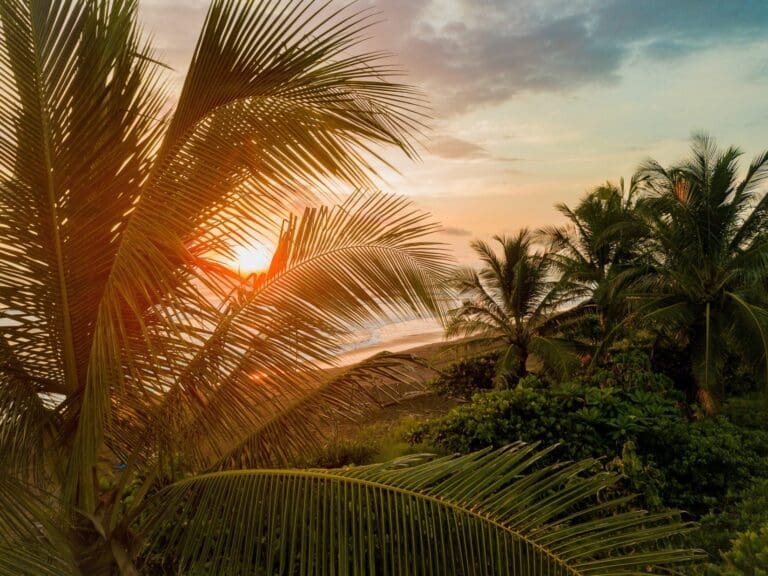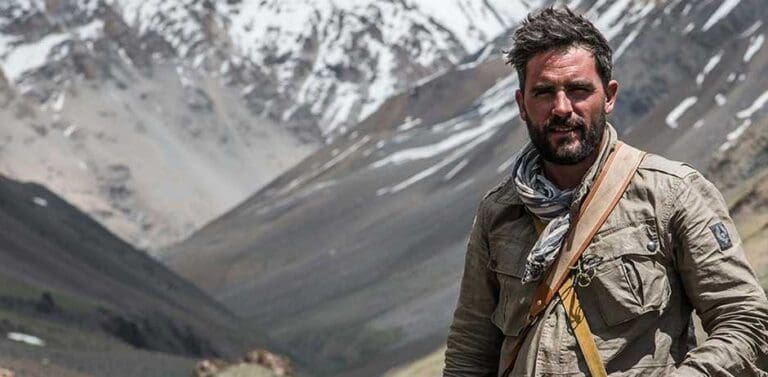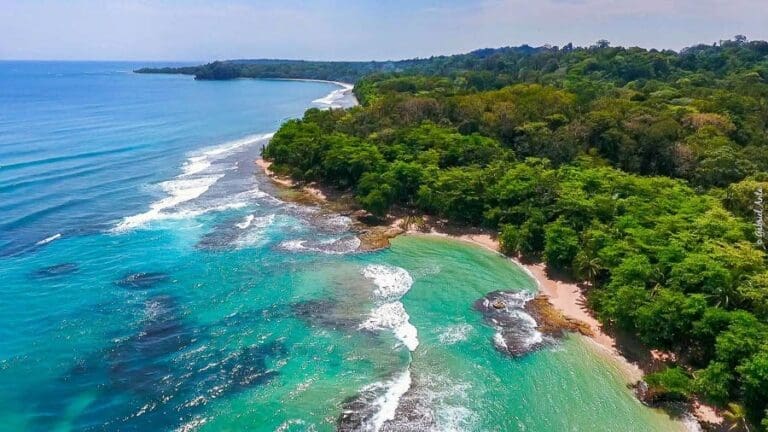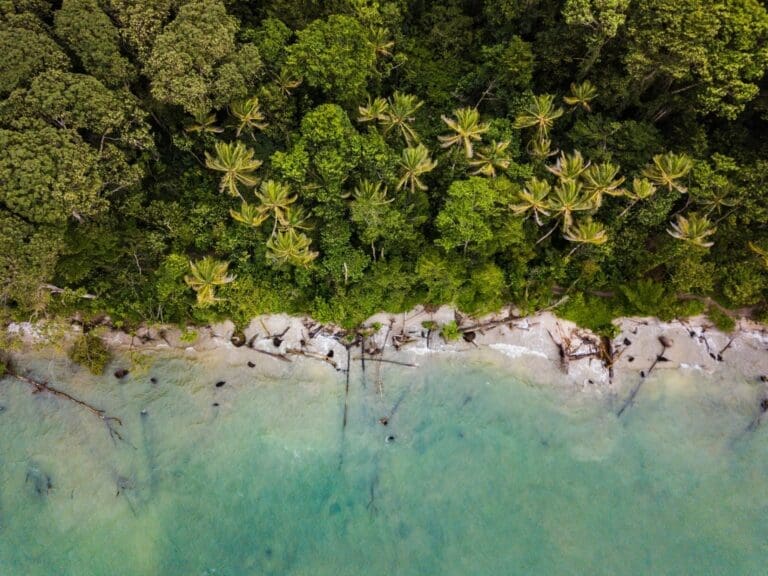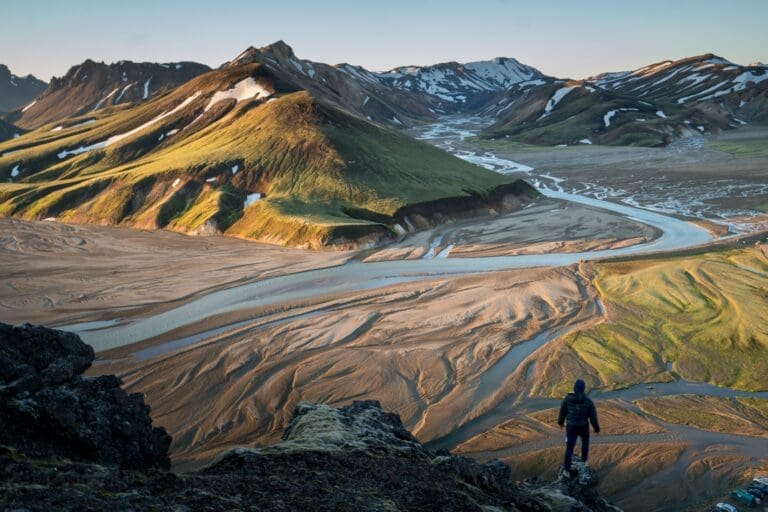General José de San Martín – The Army of the Andes
With each and every step I can hear hooves colliding with fist sized rocks as we navigate the dusty path. I watch from the rear of my column as thousands of fellow soldiers ascend The Pass above me, teetering along narrow ledges carved into the mountain’s exterior. Rounding a switchback, I turn and there he is, atop his steed. His posture is perfect, his expression stoic. It’s clear that our General is no ordinary man. There’s something so distinct about him, a look in his eye that speaks to the great purpose with which he is leading…
I came to, groggily, my senses triggered by the crisp Andean air and the tantalizing scent of Chilean bacon sizzling over an open flame. Peering through the window of my tent, I saw nothing but mountains, towering thousands of feet over the valley below. The landscape appeared as if it had been painted in brushstrokes of deep oranges and browns, which stood in stark contrast to the brilliant blue canvas of the cloudless sky. I rubbed my eyes and laughed – I’d been so immersed in San Marin’s story over the past few days, I’d deemed myself one of his cavalrymen in my sleep. How much of the scenery had changed, I wondered, since the Army of the Andes crossed these very same mountains, nearly 200 years ago? Checking the time on my Delorme satellite phone, I slipped into my jeans and followed my nose to the breakfast table, taking in the sheer size and grandeur of the landscape surrounding me, and contemplating the events that had brought me to this arresting Andean perch.
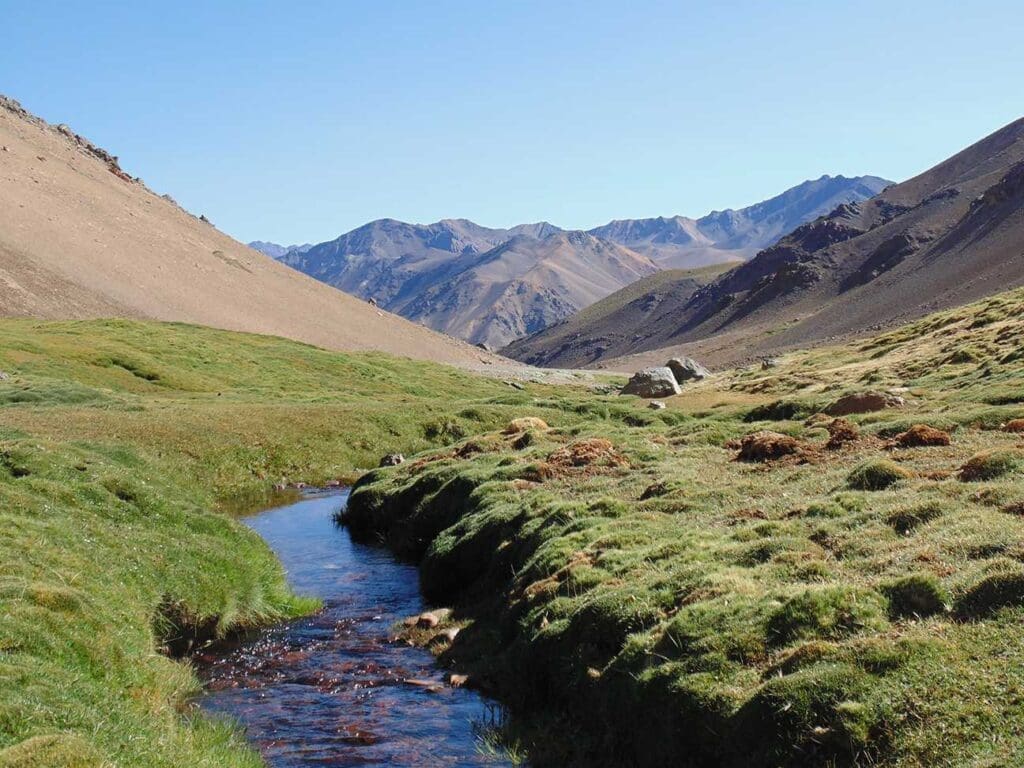
It all began nine months ago, on a business trip to Lima, Peru’s capital. It was raining when I took off from my hotel with a few hours to explore, but I didn’t mind. I walked block after block past charming Colonial-style structures in the historic city center, and found myself in a large public square featuring a prominent monument, at the top of which stood a soldier on horseback. My curiosity was piqued. Who was he? He appeared so gallant, so fiercely intent – on what, I longed to know? But soon the rainfall grew heavy and it was time, I realized, to make my way to the airport for an afternoon flight to Chile.
“…and to the Army of the Andes remains forever the glory of saying: in 24 days we have done the campaign, we crossed the highest mountains of the globe, we ended tyranny and gave freedom to Chile.”
– José de San Martín, 22 February, 1817, Santiago de Chile
That evening, in the bar of my hotel in Santiago, I noticed a painting on the wall. The character was oddly similar to the bronzed one I’d just admired in Lima. The bartender noticed my curiosity, and enlightened me: the soldier was an Argentinean General by the name of José de San Martín, she said. He was a hero, his name synonymous with independence in South America. I showed the bartender a photograph of the statue in Lima. “Plaza San Martín!” she exclaimed. In 1817, she said, over the course of 24 days, San Martín and fellow Chilean and Argentine principals led an army of 5,000 men across the Andes from Mendoza to Santiago and fought a great battle at Chacabuco. The Army of the Andes, as they were called, secured Chilean freedom and paved the way for an attack on Lima, then a Spanish stronghold. I nodded, at once fascinated and impressed with the bartender’s depth of knowledge.
Fast forward nine months, and here I was, digging into a tin plate piled high with bacon, toast, and eggs, mid-way through a five-and-a-half day, over 40-mile (64-kilometer) horseback trek across the Chilean Andes.
My journey began in the small town of Los Patos, two hours northeast of Santiago. When I arrived, I was greeted by a half-dozen horses and pack mules and a team of guides. I knew I was in good hands with Marcos, our leader, whom I’d emailed with often in the months prior to hash out the logistics of the expedition. Marcos is something of a legend, I discovered – many say he knows the Andes better than anyone on earth. I found his passion for the history of San Martín’s crossing, however, equally as inspiring. Also on the team was José Tomás, a horseman who’s been riding since the age of six, and Manuel, a cook with experience working behind the line in many of Valapariso’s top restaurants. Rounding out our group were a pair of arrieros, the Chilean equivalent of cowboys. Clad in traditional ponchos and straw chupalla hats, José and Pedro, experts in handling our horses and mules, were the lynchpins of our expedition.
I was introduced to my mount, a beautiful bay Criollo Chileno mare (a mix, I learned, between Arab and Andaluz) called Cruzar, named so for the small cross branded into her rump. Our first ride, Marcos explained as he adjusted my stirrups and checked my girth, would take us to camp Maiten Bonito. “We ride for about five hours,” he said. As I gathered up my rope reins, I tried unsuccessfully to think of the last activity I’d tackled for five consecutive hours. Even though Marcos had assured me in my trip planning that I didn’t have to be a seasoned equestrian to enjoy the expedition (“You just need to be in decent shape,” he’d said, “comfortable with heights, and up for a good challenge.”), I couldn’t help but feel a tinge of trepidation – mostly for the well being of my novice sits-bones. But my saddle was comfortable, the terrain was relatively flat, and Cruz, as I’d nicknamed her, had a smooth gate. As the hours passed, I relaxed, and my confidence grew.
…what does not allow me to sleep well is, not the strength of our enemy army, but crossing these immense mountains.
– José de San Martín, 14 June, 1816
Maiten Bonito, perched beside a natural spring stream in the shade of an evergreen Maiten forest, was the perfect site to post up on our first night in the mountains. When we reached camp, Marcos and his team worked diligently, unpacking the mules, untacking the horses, setting up tents, and preparing dinner. I didn’t know what to expect for our meals in the mountains but Manuel impressed me thoroughly with his culinary prowess. Our feast consisted of carbonada, a savory Chilean soup of minced beef, potatoes, carrots, onions and green hot chili peppers, followed by reineta fish cooked over the open fire and seasoned with capers, lemon, and a sprinkling of cheese. Paired with a few shared bottles of Chilean chardonnay, the meal was superb. With our stomachs full and spirits high, we cleaned up camp and prepared for our first night of well-earned sleep, which we opted to take outside, under a magnificent, star-studded sky. For a while, I played connect the dots from my sleeping bag, tracing the outline of constellations I’d only seen in books, but after a few minutes, a heavy sleep ensued.
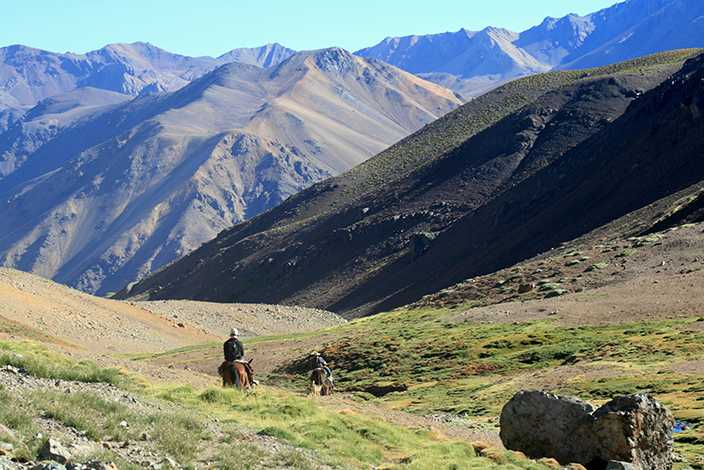
The next day, we continued northeast, our goal to reach Las Lenas Camp, an old army outpost tucked into a valley beneath the peaks of the Cordillera de la Ramada mountain range. Following in the footsteps of San Martín’s army, we scaled several passes, taking switchbacks to make the trek less arduous on the horses. The climbs and descents were still steep, however, and Cruz’s balance, along with my new riding skills, were put to the test. When there finally stood but one last pass between us and Las Lenas, I was bone tired, and I could tell by her cadence that Cruz was losing steam, too, but we pushed forward. As we made our way up the mountain I urged her on gently with aching calves. Step after step, we climbed, our caravan kicking up dust and gravel as the earth crunched beneath us. When we paused for a few moments so Marcos could dismount and cinch his girth, I peered over Cruz’s shoulder, gawking at the valley, 3,000 feet (914 meters) below.
And then we reached the top of the pass. Our reward stood brazenly before us, rising up through the clouds, dominating the horizon: the glacier-capped peak of Mount Mercedario. Standing at 22,047 feet (6,720 meters), Mercedario, the eighth highest peak in the Andes, was first summited in the late 1960’s by a group of Japanese climbers. We paused, breathing heavily, drinking in the thin, pristine air and otherworldly view.

At Las Lenas camp, Marcos and I spoke at length about San Martín’s crossing while Manuel prepared another delectable meal. “How were the soldiers equipped?” I wanted to know. Poorly, it turns out. When Marcos explained that many of San Martín’s men weren’t fortunate enough even to wear boots – instead they wrapped their feet in cloth – I swallowed any self-pity I’d secretly been harboring for my calloused hands and sore thighs, and told myself to pony up. “I want to show you something,” Marcos said, retrieving several old Chilean military maps. We slid our wine glasses aside and leaned over the table as Marcos traced the routes of San Martín’s five army divisions. As Marcos spoke, I peppered him with questions, and I could tell by the enthusiasm in his responses he hadn’t met anyone before whose passion for the story behind the Army of the Andes rivaled his.
The next morning I took my time in waking up. I was growing accustomed to mountain life – to the sense of peace that came along with being so far removed from civilization. No clocks. No commutes. No structure. No taxis or sirens or skyscrapers. I’d all but forgotten about my satellite phone, which I’d left tucked into my saddlebag. It was all so refreshingly simple. Perhaps this is the way it’s supposed to be, I thought, taking in an energizing whiff of Manuel’s brewing coffee. As I rose, I made a mental note to try to bring a piece of mountain life back with me to Manhattan.

After a hearty breakfast, we mounted up for the highlight of the trip, Las Llaretas Pass – or simply, The Pass, as Marcos called it. Las Llaretas was the location where San Martín and 3,000 of his men had crossed over the border from Argentina into Chile. We rode for several hours to get there, the topography changing before our eyes from the dry, desert-like terrain of Cuzco de Choapa valley to the rolling green pasturelands along the Llaretas River. As the horses dropped their heads for a drink, Marcos pointed out a break in the mountains a half-mile ahead. “Las Llaretas Pass is just beyond this point,” he said. We pressed on, and with excitement building amongst the group, we picked up our speed to a comfortable gallop, slowing when the terrain became uneven as we neared a final ridge. We climbed it by switchback, and the next thing I knew the mountains were behind us and we were left with a sprawling, birds-eye view of The Pass. We navigated our descent carefully, tipping our weight back in our saddles to help the horses keep their balance – a skill I was proud to discover had become second nature.
On flat ground, I dismounted, gave Cruz a scratch on the withers, and looked up as the horizon expanded boundlessly before me. The Pass – easily 656 feet (200 meters) wide – was much broader than I had expected. We were but small specs in her midst. I tried to imagine what it would have looked like, sounded like, felt like from the perspective of one of San Martín’s 3,000 men, and suddenly my arms prickled with electricity.
Gazing across the border, I asked Marcos how much he thought had changed in the last 200 years. His dark eyes scanned the horizon. “Out here?” he asked, and then he shook his head. “Nada.” I smiled, and bent down to scoop up some dirt in my hands. I’d bring a little bit of it home with me, I decided. It would remind me of The Pass, this spectacular swath of land that held so much history in its girth. It would remind me of my new Chilean friends, and of Cruz, of the feats we’d conquered together. It would remind of the mountain life I’d grown to love. And it would remind me of the bronzed horseman I stumbled upon in Lima—the great General whose indomitable spirit I could feel in the dry earth in the palm of my hand, whose ambitious quest changed the course of history.
To cross one of the world’s highest and most formidable mountain ranges with an army of thousands—many poorly equipped, lacking proper footwear, and traversing icy passes where even mules could falter—was an act of unmatched military and logistical genius. Inspired by both Enlightenment ideals and a fierce desire for liberation, San Martín envisioned more than just a military victory: he saw the unshackling of South America from colonial tyranny.
If you have ever been riding in the Andes we would love to hear about it just shoot us an email at info@explorerspassage.com. We always love a good chat!
I look forward to seeing you on the trail!
Cheers,
Jeff
Jeff Bonaldi
Founder & CEO
The Explorer’s Passage
About Jeff Bonaldi
Jeff Bonaldi is the Founder and CEO of The Explorer’s Passage, a premier adventure travel company. His mission is to provide travelers with the opportunity to transform their lives and the planet through the power of adventure.
Learn more about Jeff’s story and his company HERE.
Share this amazing location!


